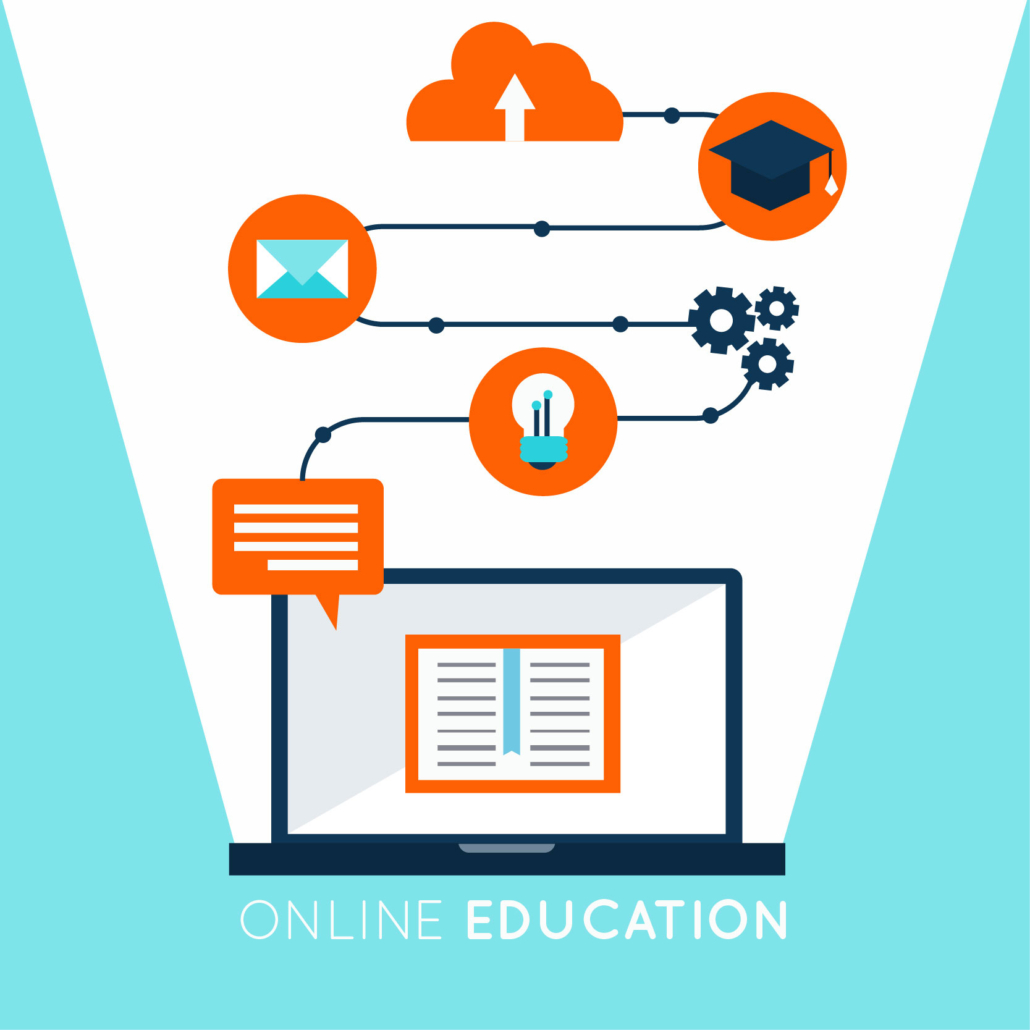Discover Top eLearning Solutions for Rapid Content Development and PowerPoint Conversion
Rapid eLearning Solutions for Content Development and PowerPoint Conversion
In the fast-changing world of education today, it’s essential to create content efficiently and convert PowerPoint seamlessly. Organizations, aiming to swiftly adapt to evolving needs, are turning to rapid eLearning solutions to enhance learning experiences rapidly.
Rapid eLearning solutions empower organizations to meet the ever-changing needs of learners by delivering timely, engaging, and impactful eLearning experiences.
In this blog post, let’s discuss the Rapid eLearning solutions needed for fast content development and PowerPoint conversion.
The Need for Rapid Content Development
Before delving into the eLearning solutions, let’s address the fundamental question: Why is rapid content development crucial in the realm of eLearning?
In today’s dynamic environment, information becomes outdated swiftly, and learners need up-to-date content to stay relevant. The traditional lengthy development processes are no longer feasible, making rapid solutions imperative.
The Challenge of Balancing Speed and Quality
One of the main challenges in rapid content development is striking the right balance between speed and quality. It’s not just about creating content quickly; it’s about ensuring that the content is engaging, informative, and aligns with the learning objectives.
Let’s explore how top 3 eLearning solutions tackle this challenge head-on.
3 Rapid eLearning Solutions for Content Development
The top eLearning solutions for rapid content development include:
- Leveraging Authoring Tools for Efficiency
- Harnessing the Power of Templates
- Microlearning for Quick Absorption
1. Leveraging Authoring Tools for Efficiency: Crafting Content with Precision
Authoring tools stand as the cornerstone of rapid eLearning development. These tools empower creators with user-friendly interfaces, allowing them to design interactive and engaging courses without extensive coding knowledge.
Here are some top e-learning authoring tools known for streamlining the content creation process, ensuring efficiency without compromising quality.
- Articulate Storyline: Renowned for its user-friendly interface and robust features, Storyline allows for rapid creation of interactive and engaging e-learning content without the need for extensive programming knowledge.
- Adobe Captivate: This tool enables quick development of responsive and interactive e-learning content. It offers a range of templates and assets to expedite the content creation process.
- iSpring Suite: Known for its simplicity and integration with PowerPoint, iSpring Suite allows for speedy conversion of presentations into interactive e-learning modules.
- Elucidat: Ideal for collaborative content creation, Elucidat offers templates and a user-friendly interface that supports rapid development and publishing of e-learning courses.
- Lectora: A powerful tool for creating customized e-learning content, Lectora facilitates rapid development through its extensive library of templates and assets.
- Adapt Learning: An open-source framework that provides a flexible and responsive authoring environment, allowing for rapid development of multi-device compatible e-learning content.
- Rapid Intake (now part of Litmos by SAP): Known for its ease of use, Rapid Intake offers features for quick content development, including templates and reusable components.
Each of these tools has its strengths and caters to different preferences in terms of interface, features, and learning curve. Choosing the right authoring tool depends on your specific requirements, content goals, and the level of interactivity and customization you seek in your e-learning modules.
2. Harnessing the Power of Templates: Consistency with Ease
Rapid accelerators and templates for rapid content development are tools or frameworks designed to expedite the process of creating content. These resources offer pre-designed structures, outlines, or formats that enable quicker content creation by providing a starting point or a guideline to follow.
They can include:
- Content Templates: These are pre-formatted outlines or structures for various types of content such as articles, reports, presentations, etc. They often include placeholders for different sections like introduction, body, conclusion, and key points to cover.
- Design Templates: For visual content like infographics, posters, or social media graphics, design templates offer ready-made layouts, color schemes, and typography, allowing creators to simply insert their content into these designs.
- Workflow Accelerators: These are frameworks or processes that streamline the content creation workflow, providing steps and guidelines to ensure efficient progress from ideation to publication.
- Reusable Components: Libraries of pre-made content elements like text snippets, graphics, or code snippets that can be easily incorporated into new content, saving time and effort in creation.
- Automation Tools: Software or platforms that automate certain parts of the content creation process, such as scheduling social media posts, generating reports, or assembling data into templates.
These accelerators and templates are valuable for individuals or teams aiming to speed up content development without compromising quality. They offer a starting point, structure, or automated assistance, allowing creators to focus more on content quality and less on starting from scratch.
3. Microlearning for Quick Absorption: Small Bites, Big Impact
Microlearning has emerged as a game-changer in the eLearning landscape. Breaking down content into bite-sized modules, it caters to the modern learner’s shorter attention spans. This approach not only facilitates rapid development but also enhances knowledge retention.
By focusing on specific learning objectives, microlearning ensures that each module delivers a targeted and impactful learning experience.
Our Well-Defined Processes to Achieve 3 Rapid eLearning Solutions for Content Development
In the dynamic realm of eLearning, our commitment to efficient and impactful content development is realized through well-defined processes. Here, we outline key strategies that drive us toward achieving rapid eLearning solutions.
Content Strategy and Planning: Start by outlining your goals, target audience, and key messages. Create a content calendar or roadmap to organize topics, deadlines, and responsibilities.
Research and Ideation: Conduct thorough research on your chosen topics or themes. Gather information from reliable sources, brainstorm ideas, and generate content concepts that align with your strategy.
Outline and Structure: Develop a clear outline or structure for your content. Break down the main points, subtopics, and key arguments to create a roadmap for the writing process.
Writing and Drafting: Begin writing content based on the outlined structure. Focus on creating a first draft without worrying too much about perfection. The goal here is to get ideas down on paper quickly.
Editing and Revision: Review and revise the initial draft. Check for clarity, consistency, grammar, and style. Make necessary edits to enhance the quality of the content.
Graphics and Multimedia Integration: Include visuals, infographics, or multimedia elements that support and enhance the content. This could involve creating images, videos, or interactive elements.
Publication and Distribution: Publish the finalized content according to your specific needs to share it with your learners.
The Need for PowerPoint Conversion
PowerPoint presentations are a universal tool in both educational and corporate training. However, converting these static slides into dynamic eLearning modules enhances engagement, interactivity, and knowledge retention.
Let’s delve into the challenges and solutions associated with this conversion process.
Challenges in PowerPoint to eLearning Transformation
Converting PowerPoint presentations into eLearning courses involves more than a simple copy-and-paste approach. The transition must address the limitations of linear slides and transform content into a format that encourages learner interaction and comprehension. The challenges include maintaining engagement, adapting to diverse learning styles, and ensuring content relevance.
Rapid and Innovative eLearning Solutions in PowerPoint Conversion
The Power of eLearning Authoring Tools in PowerPoint Conversion
Utilizing eLearning authoring tools is pivotal in the conversion process. These tools extend the functionality of PowerPoint, enabling creators to seamlessly embed quizzes, interactive elements, and multimedia. This transformation not only turns static slides into dynamic content but also enhances user engagement and facilitates better knowledge absorption.
- Articulate Storyline: It allows you to import PowerPoint slides and convert them into interactive eLearning courses. You can add interactivity, quizzes, and multimedia elements to enhance the learning experience.
- Adobe Captivate: Similar to Articulate Storyline, Adobe Captivate enables you to import PowerPoint slides and convert them into responsive eLearning content. It offers various interactive elements and assessment tools.
- iSpring Suite: This tool is specifically designed for PowerPoint-based eLearning. It integrates with PowerPoint and enables you to convert presentations into SCORM-compliant courses that can be uploaded to learning management systems (LMS).
- Camtasia: While primarily known for video editing, Camtasia can import PowerPoint slides and turn them into video lectures with added annotations, voiceovers, and other multimedia elements.
- Lectora: It allows PowerPoint import and provides tools for creating interactive eLearning content. You can enhance your presentations with branching scenarios and assessments.
- Google Slides with H5P: You can use Google Slides to create your content and then incorporate interactive elements using H5P, a free and open-source tool that allows you to add quizzes, interactive videos, presentations, and more to your slides.
- PowerPoint itself: Microsoft PowerPoint offers features to save presentations in different formats like PDF or video. While it might not provide as many interactive options as specialized eLearning tools, it’s still a simple way to share presentations in various formats.
Interactive Assessments for Enhanced Learning: Quizzes and Assessments
Integrating interactive assessments into PowerPoint conversions is a game-changer. Authoring tools enable the incorporation of quizzes, surveys, and assessments directly into the eLearning module. This not only gauges learner understanding but also provides immediate feedback, reinforcing key concepts and ensuring a more interactive and effective learning experience.
Multimedia Integration for Visual Appeal: Beyond Bullet Points
One of the limitations of traditional PowerPoint slides is the reliance on text and static images. eLearning solutions address this by seamlessly integrating multimedia elements. Video, audio, and interactive simulations not only enhance engagement but also cater to diverse learning preferences. This multimedia-rich approach transforms a standard presentation into an immersive learning journey.
Responsive Design for Anytime, Anywhere Learning: Adapting to Learner’s Needs
In the age of mobile learning, ensuring that converted eLearning content is accessible across devices is crucial. Our eLearning solutions focus on responsive design, allowing learners to access courses on various devices without compromising the learning experience. This adaptability enhances convenience and encourages learning anytime, anywhere.
Conclusion
While these solutions vary in their specific features and strengths, they collectively offer powerful tools for organizations and individuals seeking rapid eLearning content development and efficient PowerPoint conversion.
Depending on specific requirements, budget, and user expertise, selecting the right tool involves considering factors like ease of use, interactivity options, compatibility, and support. Ultimately, the choice rests on aligning the tool’s capabilities with the project’s needs to achieve optimal results in eLearning development.
Frequently Asked Questions (FAQs)
1. What eLearning solutions does Swift offer for rapid content development?
Swift eLearning solutions stand out in the realm of rapid content development and PowerPoint conversion due to their user-friendly interfaces, extensive template libraries, emphasis on multimedia integration, and commitment to collaboration and scalability.
2. What sets eLearning solutions apart from traditional learning methods?
eLearning solutions offers flexibility, accessibility, and personalized learning experiences that traditional methods struggle to match. It breaks down geographical barriers and caters to diverse learning styles.
3. What tools do you use to convert PowerPoint presentations into eLearning content?
Many eLearning authoring tools allow for PowerPoint conversion to eLearning courses. These tools often have functionalities to import PowerPoint slides, which can then be enhanced with interactive elements, quizzes, videos, and more to create engaging eLearning content.
4. What advantages do your eLearning solutions for rapid content development offer?
eLearning solutions save time and effort by simplifying the content creation process. They enable quicker adaptation to changing learning needs, faster updates to content, and easier scalability of educational materials. Additionally, they often support multimedia integration for richer learning experiences.
5. Can eLearning solutions adapt to different subjects and industries?
Absolutely! The versatility of eLearning solutions allows them to cater to a wide range of subjects and industries. From academic to corporate training, these platforms are designed to be adaptable.







